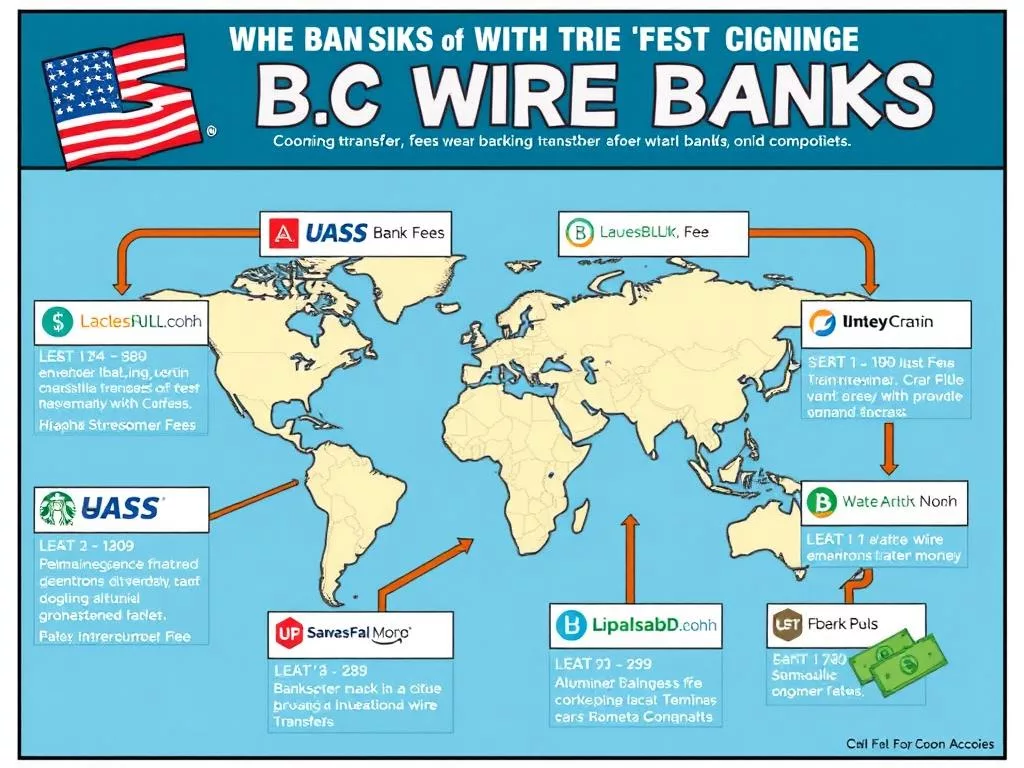Wire transfers are key for moving money between bank accounts, both in the US and abroad. The incoming wire transfer fees by US banks can change a lot. This depends on the type of transfer and the bank handling it.
For example, big banks like Bank of America and Wells Fargo usually charge about $15 for international transfers. Domestic transfers might be free or very cheap.
It’s important for people and businesses to know these fees. Some banks charge just $0 to $15 for domestic transfers. But, international transfers can cost between $0 to $45.
Banks like Chase and Citi have good rates. Knowing these can help save money. For more info, check out the guide on US bank wire transfer costs and the best international bank wire services.
Understanding Incoming Wire Transfer Fees
Wire transfer fees aren’t just for sending money; they also apply to receiving it. Many people don’t know this. In the US, banks usually charge around $15 for incoming domestic wires. International wires cost the same, but fees can change a lot.
To get a full picture, check out how banks charge for wire transfers and their costs.

Domestic and international wire fees can be very different. This is because of things like intermediary banks and manual processing. So, it’s key to know the details of your bank’s services.
Some banks offer special deals on these fees. For example, certain premium accounts might not have to pay them. This shows why choosing the right bank and account is important. It can save you a lot of money.
- Average fees for incoming domestic wire transfers range from $0 to $50.
- International incoming wire transfers typically incur fees around $30.
The table below compares the fees of some major banks for both domestic and international wire transfers:
| Bank | Domestic Incoming Wire Fee | International Incoming Wire Fee |
|---|---|---|
| Bank of America | $15 | $16 |
| Wells Fargo | $15 | $16 |
| Chase | $15 | $15 |
Knowing about these fees is very important. This is because global payments are growing fast. By 2030, they’re expected to reach $290 trillion. So, understanding wire transfer fees is key for smart financial planning.
Guide to incoming international wire transfer fees us banks
International wire transfer fees can affect both individuals and businesses a lot. US banks, like Chase and Citi, usually charge about $15 for incoming international wires. It’s important to know these fees to manage cross-border banking fees well.

International wire transfer fees usually fall between $30 and $50. Also, intermediary banks might charge extra fees. This can make the total cost higher for US customers. Some high-end clients or those with private banking might get these fees waived or negotiated.
Choosing the right currency can also affect the cost. Banks might offer better exchange rates for certain currencies.
The fees for international wire transfers from US banks include several parts. There are the banks’ fees and any extra charges from intermediary banks, which can be $10 to $20 per transaction. These transfers usually take 1-3 business days to process. Knowing the fee structures can help save money, which is good for those who often send money internationally.
| Bank Name | Incoming Fees | Outgoing Fees | Currency Conversion Fees |
|---|---|---|---|
| Chase | $15 | $25 domestic, $5 foreign currency | 1.0%-3.0% |
| Bank of America | $15 | $0 foreign currency | 1.0%-3.0% |
| Citi | $15 | $35 domestic, $15 foreign currency | 1.0%-3.0% |
For those who often deal with international transactions, banks might not be the cheapest option. This is because of old systems and higher costs. Companies like OFX and Wise usually have lower fees and better exchange rates. For example, Wise’s fee is often less than 1% of the transfer amount. OFX offers fee-free transfers with exchange rate markups between 1.35% and 4.50%.
How to Avoid High Incoming Wire Transfer Fees
Reducing wire transfer costs can greatly help both consumers and businesses. One easy way is to choose banking services with lower or no fees. For example, Fidelity and State Employees’ Credit Union offer deals where some wire transfers are free.
Another smart move is to send money within the same bank. This often means lower fees. Also, using online banking instead of going to a branch can save money. Sending bigger amounts less often can cut down on fees too.
Looking into third-party services like Wise and Currencies Direct can also save money. They usually have lower costs and better exchange rates than banks. Wise, for example, charges a small percentage, often less than what banks charge.
Platforms like BILL International Payments can eliminate wire transfer fees for local currency payments. They also cover all bank charges. These options are great for those looking to save on international money transfers.
By using these strategies, you can make wire transfers cheaper and avoid high fees. This is good for both personal and business finances.

